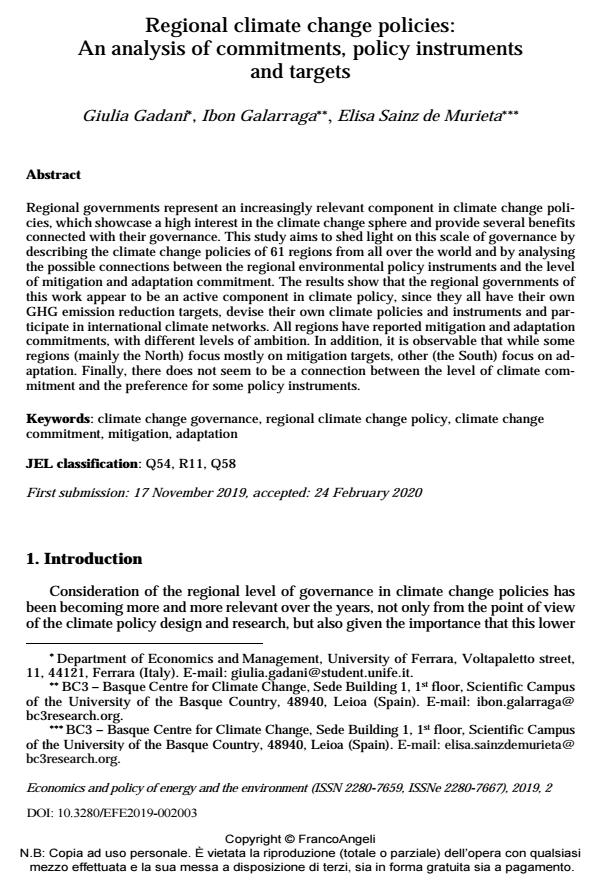Regional climate change policies: An analysis of commitments, policy instruments and targets
Journal title ECONOMICS AND POLICY OF ENERGY AND THE ENVIRONMENT
Author/s Giulia Gadani, Ibon Galarraga, Elisa Sainz de Murieta
Publishing Year 2020 Issue 2019/2
Language English Pages 26 P. 49-74 File size 296 KB
DOI 10.3280/EFE2019-002003
DOI is like a bar code for intellectual property: to have more infomation
click here
Below, you can see the article first page
If you want to buy this article in PDF format, you can do it, following the instructions to buy download credits

FrancoAngeli is member of Publishers International Linking Association, Inc (PILA), a not-for-profit association which run the CrossRef service enabling links to and from online scholarly content.
Regional governments represent an increasingly relevant component in climate change policies, which showcase a high interest in the climate change sphere and provide several benefits connected with their governance. This study aims to shed light on this scale of governance by describing the climate change policies of 61 regions from all over the world and by analysing the possible connections between the regional environmental policy instruments and the level of mitigation and adaptation commitment. The results show that the regional governments of this work appear to be an active component in climate policy, since they all have their own GHG emission reduction targets, devise their own climate policies and instruments and participate in international climate networks. All regions have reported mitigation and adaptation commitments, with different levels of ambition. In addition, it is observable that while some regions (mainly the North) focus mostly on mitigation targets, other (the South) focus on adaptation. Finally, there does not seem to be a connection between the level of climate commitment and the preference for some policy instruments.
Keywords: Climate change governance, regional climate change policy, climate change commitment, mitigation, adaptation
Jel codes: Q54, R11, Q58
Giulia Gadani, Ibon Galarraga, Elisa Sainz de Murieta, Regional climate change policies: An analysis of commitments, policy instruments and targets in "ECONOMICS AND POLICY OF ENERGY AND THE ENVIRONMENT" 2/2019, pp 49-74, DOI: 10.3280/EFE2019-002003